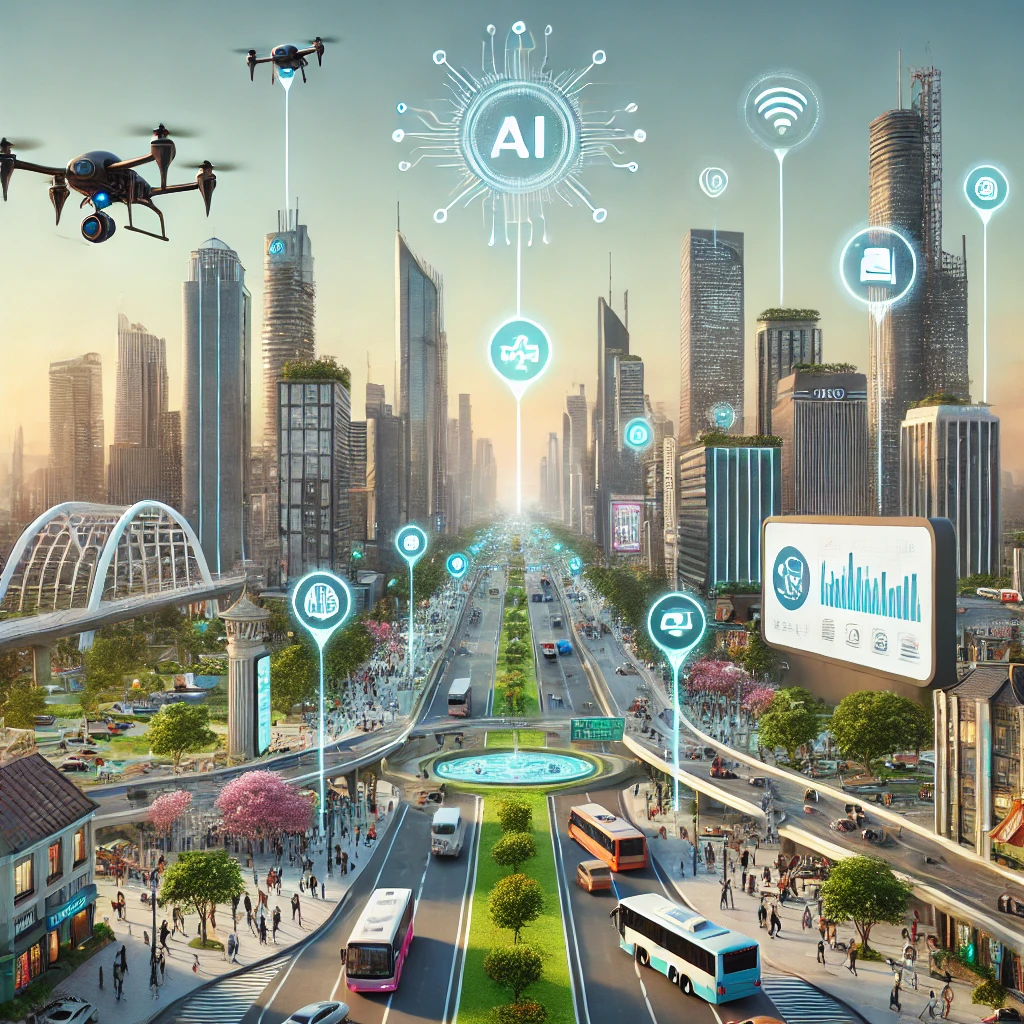As the world continues to embrace digital transformation, the concept of “smart cities” has emerged as a cutting-edge approach to urban development. In the Philippines, a country known for its rapid urbanization, AI plays a pivotal role in modernizing infrastructure and improving the quality of life for its citizens. In this article, we’ll explore how artificial intelligence is revolutionizing urban development and contributing to the creation of smart cities across the archipelago.
What is a Smart City?
A smart city is an urban area that uses digital technologies—particularly AI, the Internet of Things (IoT), and big data analytics—to enhance the efficiency of city services, promote sustainability, and improve overall citizen welfare. In the Philippines, where traffic congestion, environmental concerns, and resource management challenges are prominent, the implementation of AI solutions is both timely and essential.
AI in Urban Planning
AI-driven urban planning is at the forefront of smart city development. One of the most critical areas where AI is making an impact is in traffic management. In cities like Manila, known for its severe traffic congestion, AI-powered systems can optimize traffic flow by predicting peak congestion times and adjusting traffic signals in real-time. This not only reduces travel time but also lowers emissions from idling vehicles, contributing to a greener city environment.
In addition, AI is enabling more precise urban growth planning. With predictive analytics, city planners can simulate the effects of new infrastructure projects and assess how these changes will impact traffic, population density, and energy consumption. This data-driven approach allows for smarter, more sustainable urban expansion.
Smart Infrastructure
AI is also revolutionizing the way cities manage their infrastructure. One example is the integration of AI with IoT sensors in public utilities, such as water and electricity. These smart systems can monitor consumption patterns and detect anomalies like leaks or power outages, allowing for quicker response times and reducing wastage. In water-scarce regions, such technology is invaluable for ensuring that resources are distributed efficiently.
Moreover, AI can enhance the maintenance of public infrastructure by predicting when roads, bridges, and other critical assets need repairs. By identifying wear and tear patterns, municipalities can schedule maintenance proactively, preventing costly and disruptive breakdowns.
Public Safety and Security
Public safety is a key concern for any urban area, and AI is proving to be a game-changer in this sector. AI-powered surveillance systems equipped with facial recognition and behavior analysis can monitor crowded areas, such as markets or transportation hubs, to detect suspicious activities. This allows law enforcement agencies to act swiftly and prevent potential security threats.
In disaster-prone areas, AI is being used to improve emergency response times. For instance, AI algorithms can analyze social media posts and other real-time data to identify areas affected by natural disasters like typhoons or floods. This information helps authorities allocate resources more effectively and save lives.
AI for Environmental Sustainability
Sustainability is a major focus of smart city initiatives, and AI is playing a critical role in tackling environmental challenges. The Philippines, being vulnerable to climate change, has much to gain from AI-driven solutions that promote sustainability. AI-powered systems can monitor air and water quality in real-time, alerting authorities to take immediate action when pollution levels exceed safe limits.
In addition, AI can optimize energy consumption in buildings by analyzing usage patterns and automatically adjusting heating, cooling, and lighting systems. This not only reduces energy bills but also minimizes the carbon footprint of urban areas.
Challenges and Opportunities
While the benefits of AI in smart city development are undeniable, there are challenges that need to be addressed. The Philippines, like many developing countries, faces issues such as limited access to high-speed internet, lack of digital literacy, and insufficient funding for large-scale AI projects. However, with proper government support and collaboration with the private sector, these hurdles can be overcome.
The government’s recent push toward digital transformation, particularly under the “Build, Build, Build” program, provides a solid foundation for the adoption of AI technologies in urban development. Smart city projects like New Clark City are already setting a precedent for how AI can be effectively integrated into city planning and management.
Conclusion
AI is undoubtedly transforming the way cities are planned, built, and managed in the Philippines. By leveraging AI, cities can become more efficient, sustainable, and livable, addressing the unique challenges faced by urban areas in the country. From improving traffic management to ensuring public safety and promoting environmental sustainability, AI is at the heart of the Philippines’ smart city revolution.
As the Philippines continues to grow and urbanize, the integration of AI in city development will not only improve the quality of life for its citizens but also position the country as a leader in smart city innovation in Southeast Asia.
I, Evert-Jan Wagenaar, resident of the Philippines, have a warm heart for the country. The same applies to Artificial Intelligence (AI). I have extensive knowledge and the necessary skills to make the combination a great success. I offer myself as an external advisor to the government of the Philippines. Please contact me using the Contact form or email me directly at evert.wagenaar@gmail.com!
[SEO optimized]

Pingback: Coming up: - evertslabs.org